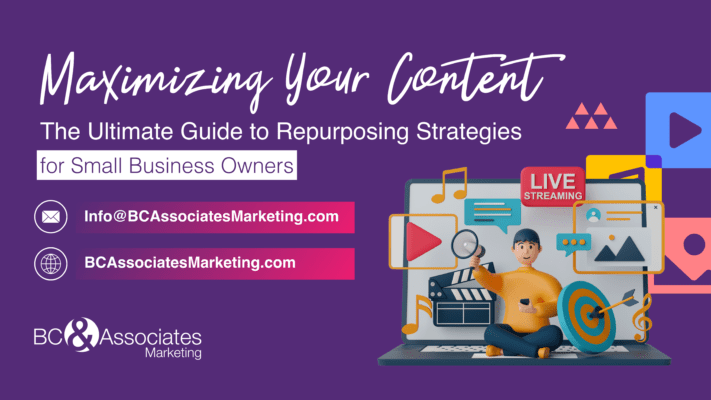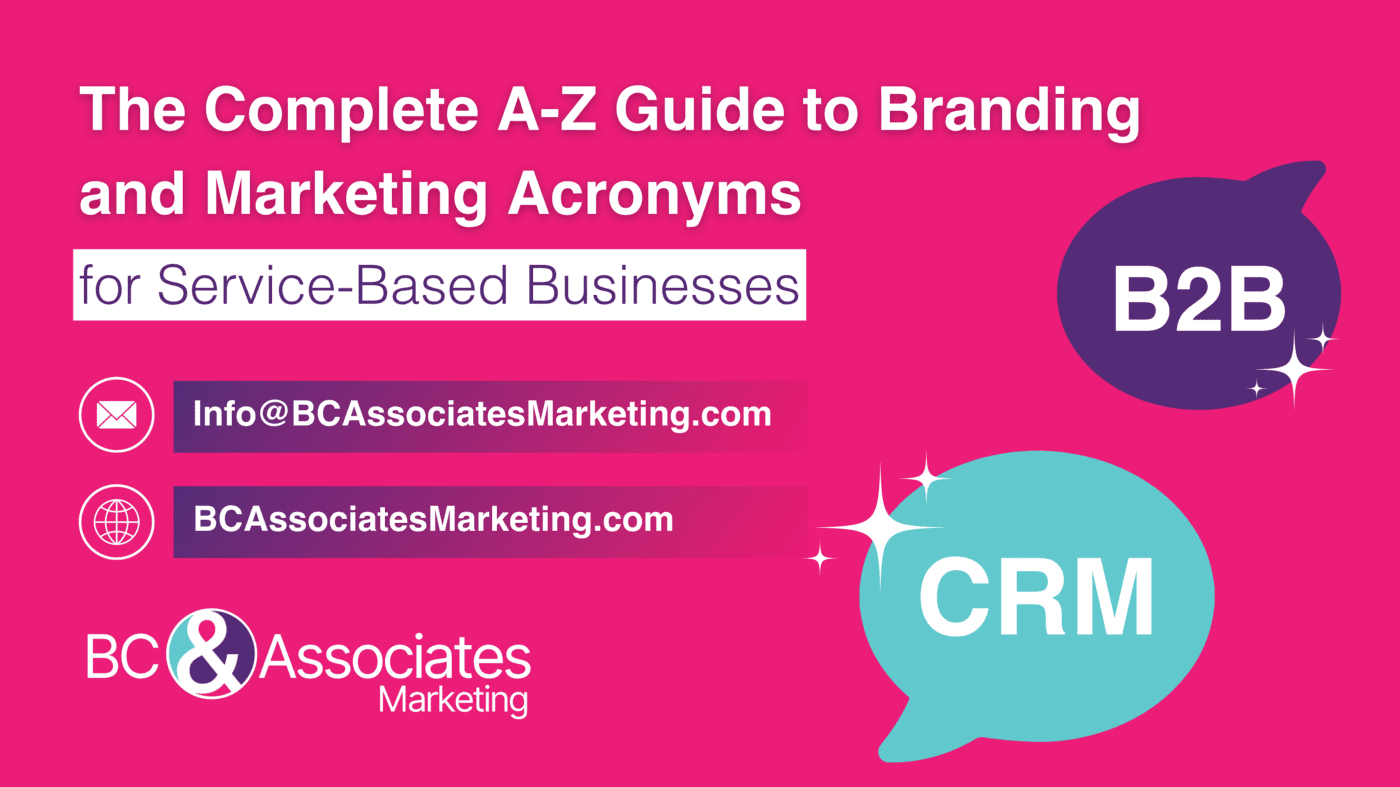As a service-based business owner, navigating the complex landscape of branding and marketing can feel overwhelming. The sheer volume of acronyms used in the industry can make it seem like a foreign language. Understanding these terms is crucial for effective communication, strategic planning, and measuring success. This comprehensive alphabetical guide will demystify these key acronyms, empowering you to make informed decisions and drive your business forward.
Why Understanding These Acronyms Matters
Grasping the meaning of these acronyms helps you:
- Communicate Clearly: Ensures effective communication with your marketing team and external partners.
- Strategize Effectively: Allows for informed decision-making and efficient allocation of resources.
- Measure Performance: Provides a clear understanding of metrics to track and improve your marketing efforts.
A Comprehensive Alphabetical List of Branding and Marketing Acronyms
A
A/B Testing: Comparing two versions of a webpage or ad to determine which one performs better.
AI (Artificial Intelligence): The simulation of human intelligence processes by machines, especially computer systems. In marketing, AI is used for data analysis, customer service (like chatbots), personalization, and more.
API (Application Programming Interface): A set of tools and protocols for building software applications, enabling different systems to communicate with each other.
B
B2B (Business-to-Business): Transactions or marketing efforts between businesses rather than between a business and individual consumers.
B2C (Business-to-Consumer): Transactions or marketing efforts directly between a business and individual consumers.
BR (Bounce Rate): The percentage of visitors who navigate away from a website after viewing only one page.
C
CAC (Customer Acquisition Cost): The cost associated with acquiring a new customer, including marketing and sales expenses.
CPC (Cost Per Click): The amount paid for each click on an online advertisement.
CPL (Cost Per Lead): The amount paid for each lead generated from marketing efforts.
CRM (Customer Relationship Management): Strategies and technologies used by companies to manage and analyze customer interactions and data throughout the customer lifecycle.
CTA (Call to Action): A prompt that encourages users to take a specific action, such as “Sign Up” or “Learn More.”
CTR (Click-Through Rate): The percentage of users who click on a specific link compared to the total number of users who view a page, email, or ad.
D
DM (Direct Mail/Direct Message): Traditional mail or online messaging sent directly to potential or current customers.
DSP (Demand-Side Platform): A system that allows buyers of digital advertising to manage multiple ad exchanges and data exchange accounts through one interface.
E
ESP (Email Service Provider): A company that offers email marketing or bulk email services.
G
GA (Google Analytics): A web analytics service that tracks and reports website traffic, helping businesses understand their audience and performance.
GDN (Google Display Network): A collection of websites, including Google properties like YouTube, where businesses can display their ads.
K
KPI (Key Performance Indicator): A measurable value that indicates how effectively a company is achieving its key business objectives.
L
LTV (Lifetime Value): The total revenue a business expects to earn from a customer over the lifetime of their relationship.
M
MQL (Marketing Qualified Lead): A lead that has been deemed more likely to become a customer based on marketing efforts and criteria.
MRR (Monthly Recurring Revenue): The predictable revenue a company expects to receive on a monthly basis from its customers.
N
NPS (Net Promoter Score): A metric used to gauge customer loyalty by asking how likely customers are to recommend a business to others.
P
PPC (Pay-Per-Click): An online advertising model where advertisers pay each time a user clicks on their ad.
PR (Public Relations): The practice of managing and disseminating information from an organization to the public to shape public perception.
R
ROI (Return on Investment): A measure of the profitability of an investment, calculated as the net profit divided by the cost of the investment.
ROAS (Return on Ad Spend): The revenue generated for every dollar spent on advertising.
S
SaaS (Software as a Service): A software distribution model in which applications are hosted by a service provider and made available to customers over the internet.
SEO (Search Engine Optimization): The practice of optimizing web content to increase visibility and rank higher in search engine results.
SERP (Search Engine Results Page): The page displayed by search engines in response to a query by a user.
SMM (Social Media Marketing): The use of social media platforms to promote a product or service.
SME (Small and Medium-sized Enterprises): Businesses whose personnel numbers fall below certain limits.
T
TAM (Total Addressable Market): The total revenue opportunity available if a product or service achieves 100% market share.
U
UGC (User-Generated Content): Content created and shared by users about a brand, often used in marketing to increase authenticity and engagement.
UI (User Interface): The space where interactions between humans and machines occur, particularly in software and devices.
USP (Unique Selling Proposition): A factor that differentiates a product or service from its competitors, such as the highest quality, lowest cost, or most innovative.
V
VR (Virtual Reality): The use of computer technology to create a simulated environment. In marketing, VR can provide immersive experiences for customers.
UX
UX (User Experience): The overall experience a user has when interacting with a product or service, focusing on usability and ease of use.
Common Mistakes and Myths
- Mistake: Ignoring A/B testing because it seems too technical.
- Reality: A/B testing is a straightforward and powerful method to optimize your marketing efforts. Even small changes can lead to significant improvements in performance.
- Myth: AI is too advanced for small businesses.
- Truth: AI tools, like chatbots and personalized recommendations, are increasingly accessible and can greatly enhance customer service and marketing efficiency for businesses of all sizes.
- Mistake: Overlooking the importance of a CRM system.
- Reality: Implementing a CRM system can streamline your customer interactions, improve customer satisfaction, and drive sales growth.
Best Practices
- Utilize Analytics: Regularly review analytics to gain insights into customer behavior and campaign performance. Use these insights to refine your strategies.
- Leverage AI: Incorporate AI tools to enhance personalization, improve customer service, and streamline marketing processes.
- Optimize PPC Campaigns: Monitor and adjust your PPC campaigns to ensure you are getting the best return on your advertising spend.
- Invest in SEO: Focus on both on-page and off-page SEO to improve your website’s visibility and attract organic traffic.
Trends to Watch
- Increased Use of AI and Machine Learning: AI is becoming more integrated into marketing tools, offering enhanced data analysis, automation, and personalization capabilities.
Watch our video AI in Marketing 2024: Transforming Service-Based Businesses with Beverly Cornell
- Growth of Video Marketing: Video content continues to rise in popularity, providing engaging ways to connect with your audience.
- Expansion of VR and AR: Virtual and augmented reality are creating new opportunities for immersive customer experiences.
Bonus: Innovative Ideas
- Interactive Content: Incorporate quizzes, polls, and interactive infographics to engage your audience and gather valuable insights.
- Referral Programs: Encourage satisfied customers to refer others by offering incentives, leveraging word-of-mouth marketing.
- Personalization: Use data to tailor marketing messages and offers to individual customer preferences, increasing engagement and conversion rates.
Conclusion
Mastering the key acronyms of branding and marketing is essential for driving growth in your service-based business. Understanding these terms allows you to communicate effectively, strategize efficiently, and measure performance accurately. Start implementing these insights today to elevate your marketing efforts and achieve your business goals.
For more in-depth strategies, check out our blog on Maximizing Your Content Marketing Efforts.
P.S. Ready to spark your unique opportunities and ignite your marketing? Here are three ways to work with us.
1. 📞 Schedule a Complimentary 15-minute Call and let’s delve into your goals and answer any questions you may have.
2. 📘 Read Beverly’s book Marketing for Entrepreneurs a quick guide filled with actionable steps to help make your brand and business shine even brighter. 🎙️ Listen to Beverly’s Marketing Podcast where she interviews entrepreneurs to get inspired and gain new business and marketing insights.
3. 🎓 Learn more about marketing and Enroll in Our Marketing Courses designed to bring clarity to your business efforts. They’re easy-to-understand and self-paced, perfect for busy entrepreneurs like you.
Additional Blogs to Aid Your Marketing Journey
- How to Build and Maintain a Strong Online Reputation for Your Service-Based Business
- Local SEO Strategies for Service-Based Businesses: Capturing Local Customers
- Small Businesses Need Social Media Marketing


